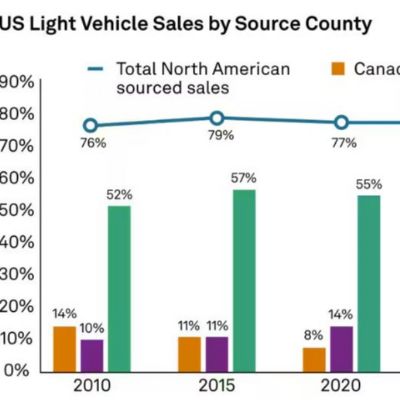From Beer Comes Inspiration
December 1, 2008Comments
Meet my new hero, the late, great August A. Busch. No, not because I’ve just discovered the great taste of his company’s mass-produced St. Louis suds. Rather, my inspiration comes after recently viewing a documentary on Anheuser-Busch, for it’s a story defined by perseverance, determination and creativity.
Throughout the early part of the 20th century, the beer-making giant experienced huge growth. Then the unthinkable happened in 1920—prohibition. Busch refused to waste his company’s top-flight workforce and its state-of-the-art manufacturing capabilities, so the company persevered and diversified, in no small .
Throughout the 1920s and into the ‘30s, Anheuser-Busch manufactured ice cream, syrup, ginger ale, root beer and corn syrup. It even made durable goods, such as truck and bus bodies and refrigerated cabinets. Then, in 1933, prohibition ended, and the rest is history.Fast-forward to today, where U.S. automakers, as well as their suppliers, face a slap in the face similar to that faced back in 1920 by Anheuser-Busch and its peers. While no one foresees a 13-yr. drought, we do have the doomsday report released a few weeks ago by the Center for Automotive Research. The report predicts possible U.S. job losses approaching 3 million should Detroit’s Big 3 fail.
Even with a government bailout, our manufacturing infrastructure still faces real questions and challenges as we look to recover. I am convinced that as did Anheuser-Busch nearly 100 years ago, our automotive infrastructure must expand into newly developing markets.Allow me to suggest two supply chains worth developing: fuel-cell and wind-energy technology. A few facts: The U.S wind-energy industry will post its fourth consecutive record year in 2008. The U.S. Department of Energy (DOE) predicts that the industry, by 2030, could support 500,000 jobs. This year alone, according to the American Wind Energy Association, saw the opening of eight new wind-turbine component-manufacturing facilities, the expansion of nine more facilities, and the announcement of 19 new facilities planned. Together they account for 9000 new jobs.
At the same time, commercializing fuel-cell development and shifting from gasoline to hydrogen could generate 675,000 new jobs over the next 25 years, according to another recent DOE study. It suggests that commercialization could produce more than 100,000 new jobs in 41 industries in the five Upper Midwest states, the traditional center of automobile manufacturing.The diversification from traditional automotive to alternative-energy supply already is happening at the most forward-thinking companies. Consider British automotive-engineering company Ricardo Inc., with North American headquarters near Detroit. Its story of diversification, recently blogged on mlive.com, describes its pursuit of green technology in sectors including wind turbines, solar power and tidal-power generation. Ricardo’s alternative-energy-related revenue stream tripled in 2008, to about 10 percent of its total revenues.
Another success story, recently recounted on an alternative-energy blog, comes from Michigan’s (Oakland County) Three M Tool & Machine Inc. The precision machining and production company recently won a 5-yr. $7-million contract to produce gearbox housings and other products for California wind-turbine manufacturer Clipper Windpower. The project has Three M Tool & Machine expanding into a 42,000-sq-.ft. building and investing in new equipment.
Does automotive’s resurgence happen overnight? Of course not. But I urge you to make moves to help position your company to capitalize on any expanding markets you can identify—alternative energy or otherwise. Study the major players and learn of their product and technology needs, and dive in.So go share a beer with some coworkers and gain inspiration from the stories of Anheuser-Busch, Ricardo Inc. and Three M Tool & Machine.
Technologies: Management








